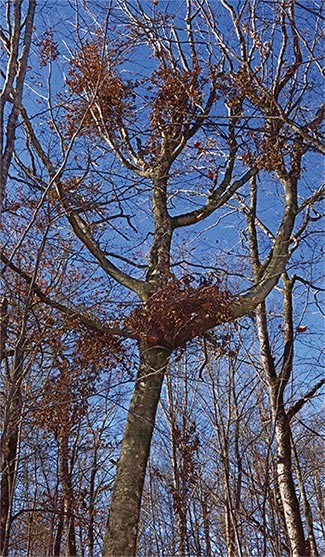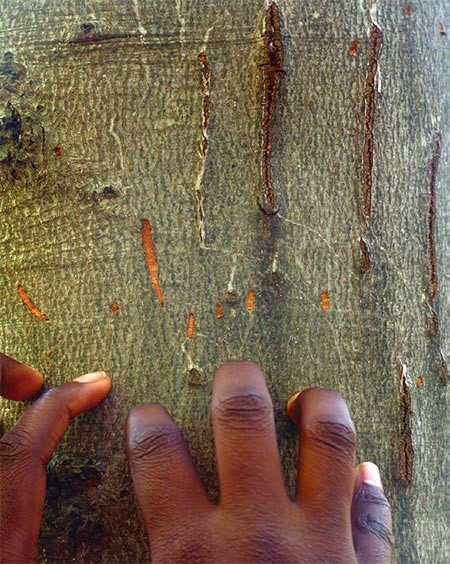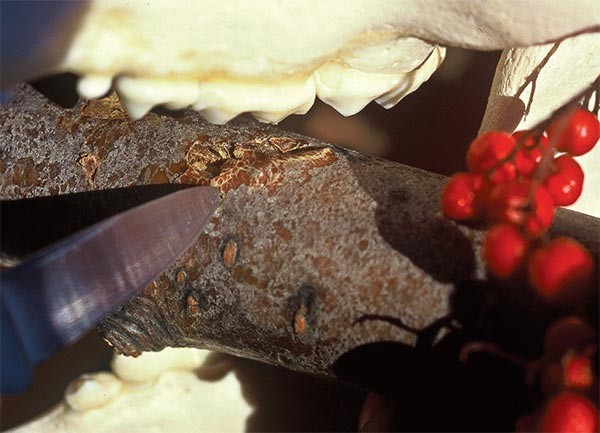Except for the Minnesota black bear that chose to spend the winter hibernating 70 feet up in a bald eagle nest, North American black bears don’t hang out in tree nests. Rather, the “nests” you see in the crowns of trees are a byproduct of mast consumption. Remarkably adept at climbing, a bear will climb a tree and then stand or sit upon heavier branches while reaching up and pulling smaller, fruit-laden limbs inward. Broken and bent branches are placed in piles, concentrating the food so that it may be safely and comfortably consumed. Female bears are leaner, more agile, and better built for climbing. Starting as early as July, sows will climb several different species of trees for their nutritious fruits. Partaking in tree fruit harvests throughout the summer months, she can significantly increase her weight – critical fat reserves that prepare her for hibernation, birthing cubs, and lactation within her winter den.
Whenever I find an especially large bear nest, or a tree festooned with several nests, I’ll inspect the trunk carefully, searching for further evidence. On such trees, I often find claw scars made by a bigger-footed animal – Mother – accompanied by smaller claw scar sets created by smaller paws – no doubt her offspring.
Bear nests look like giant squirrel nests. They are most easily discovered in winter, when the clusters of broken branches, with leaves still attached to the twigs, contrast with the leafless limbs surrounding them. The persistent attachment of the nest’s leaves to their dead branches is interesting. Why haven’t they fallen off? Plant physiologists have described the “abscission zone” as a kind of wall between layers of cells just above the leaf attachment. A complex interplay of environmental and biochemical cues causes the wall’s dissolution in autumn, resulting in the leaf’s detachment from the twig. Leaves that cling to the bear nest indicate that the branches were broken in the summer or early September, before the leaf attachment weakening process had begun.





